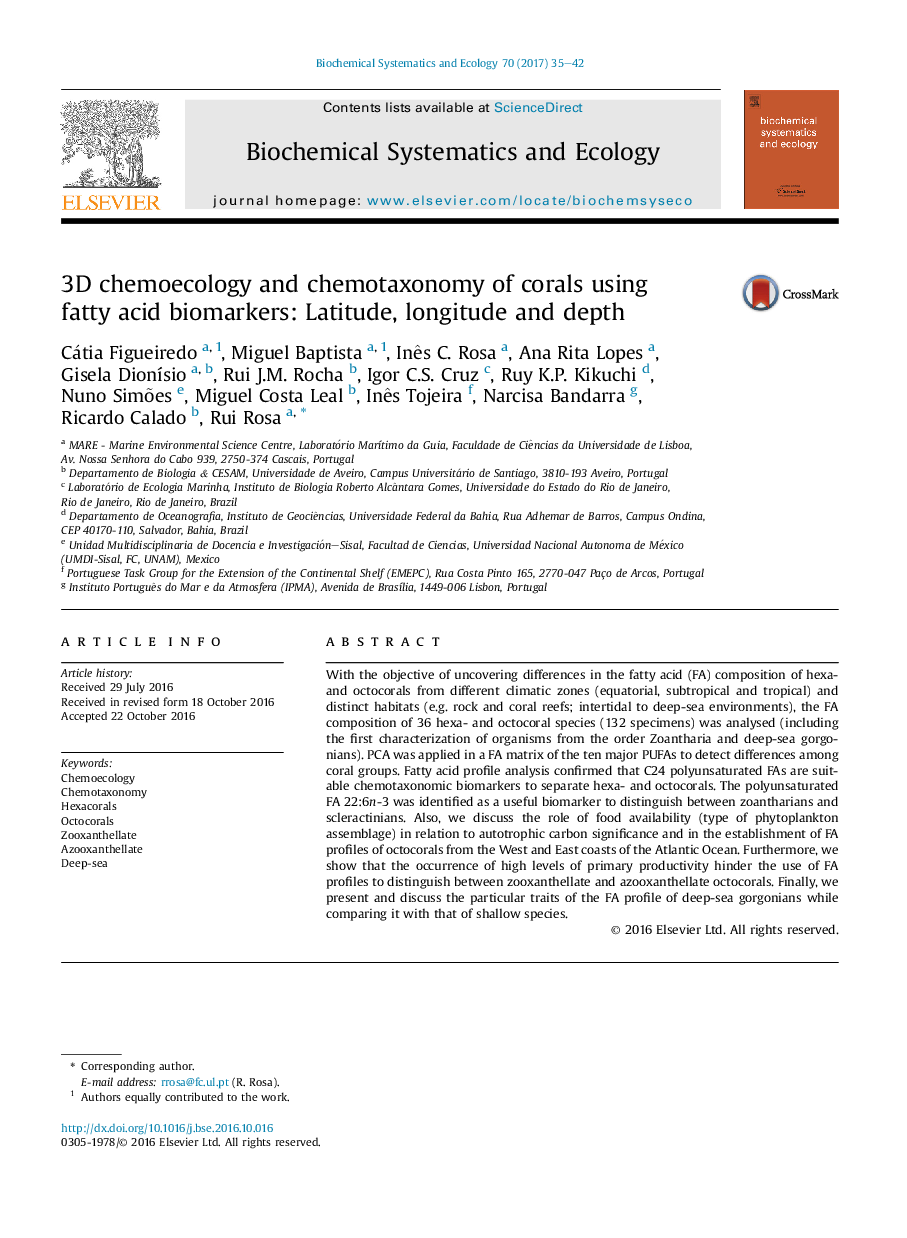| Article ID | Journal | Published Year | Pages | File Type |
|---|---|---|---|---|
| 5154961 | Biochemical Systematics and Ecology | 2017 | 8 Pages |
Abstract
With the objective of uncovering differences in the fatty acid (FA) composition of hexa- and octocorals from different climatic zones (equatorial, subtropical and tropical) and distinct habitats (e.g. rock and coral reefs; intertidal to deep-sea environments), the FA composition of 36 hexa- and octocoral species (132 specimens) was analysed (including the first characterization of organisms from the order Zoantharia and deep-sea gorgonians). PCA was applied in a FA matrix of the ten major PUFAs to detect differences among coral groups. Fatty acid profile analysis confirmed that C24 polyunsaturated FAs are suitable chemotaxonomic biomarkers to separate hexa- and octocorals. The polyunsaturated FA 22:6n-3 was identified as a useful biomarker to distinguish between zoantharians and scleractinians. Also, we discuss the role of food availability (type of phytoplankton assemblage) in relation to autotrophic carbon significance and in the establishment of FA profiles of octocorals from the West and East coasts of the Atlantic Ocean. Furthermore, we show that the occurrence of high levels of primary productivity hinder the use of FA profiles to distinguish between zooxanthellate and azooxanthellate octocorals. Finally, we present and discuss the particular traits of the FA profile of deep-sea gorgonians while comparing it with that of shallow species.
Keywords
Related Topics
Physical Sciences and Engineering
Chemistry
Organic Chemistry
Authors
Cátia Figueiredo, Miguel Baptista, Inês C. Rosa, Ana Rita Lopes, Gisela DionÃsio, Rui J.M. Rocha, Igor C.S. Cruz, Ruy K.P. Kikuchi, Nuno Simões, Miguel Costa Leal, Inês Tojeira, Narcisa Bandarra, Ricardo Calado, Rui Rosa,
